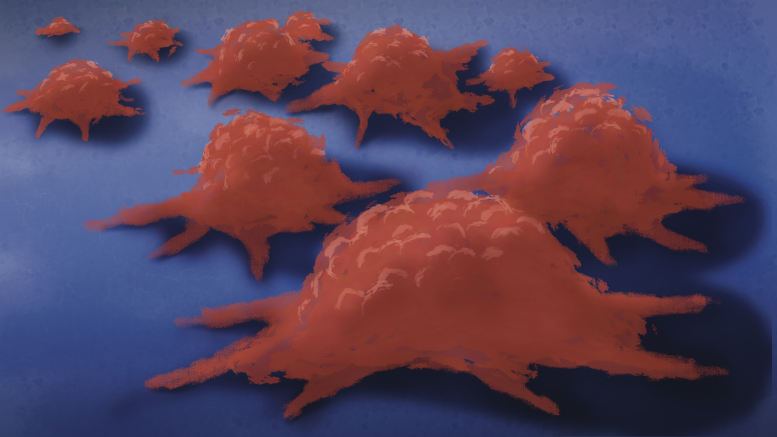Over one million people worldwide are diagnosed with blood cancer every year, causing 720,000 deaths annually.
Blood cancers begin when cells in the bloodstream or bone marrow mutate, allowing them to multiply excessively and have abnormally long lifespans. When cancerous cells rise in number and monopolize space and nutrients, there may not be enough normal cells to carry out essential tasks such as carrying oxygen through the bloodstream, fighting infection and controlling bleeding.
Versha Banerji is an associate professor of internal medicine in the U of M’s Max Rady college of medicine. Her research aims to provide effective and safe treatments for patients with blood cancers.
“The work that I contribute to, whether it’s clinical, or basic sciences, or translational or clinical trials, ultimately touches people’s lives,” Banerji said. “I’ve seen that firsthand, how treatments that get implemented in their care can improve their quality of life and their survival.”
Banerji’s research examines patients with a variety of chronic blood cancers. Hairy cell leukemia is a type of cancer that begins in white blood cells, which normally fight infections, leading to an oversupply of mutated white blood cells with tendrils that give them a “hairy” appearance. Chronic lymphocytic leukemia begins in the bone marrow. Small lymphocytic lymphoma begins in the lymph nodes and spleen.
“I also take care of some patients who are kind of in a gray zone where they don’t really meet criteria for the cancers, but they may suffer the same immune complications associated with them,” Banerji said. “They’re still at risk for other problems, which include infections or other cancers, and so we tend to keep a very close eye on them.”
Traditionally, patients received chemotherapy-based treatments. Chemotherapy uses drugs to kill cells that are in the process of multiplying. Though this targets cancerous cells, which multiply excessively, healthy cells can be caught in the crossfire.
While effective at eradicating cancer cells, chemotherapy’s side effects — which include nausea, fatigue, hair loss and pain — can severely impact patients’ quality of life. Many patients simply do not respond well to chemotherapy.
For much of Banerji’s training, she never had the opportunity to see patients survive past a certain point in the treatment, as they would eventually run out of therapy options. There are however, compounds called tyrosine kinase inhibitors that have been clinically tried and become available for safe use in clinics.
“We started to see the patients who had failed one to eight lines of therapies starting to become responsive to these new oral treatments,” Banerji said. “We went from patients succumbing to their cancer to ultimately surviving even to this day, years out.”
Newer generations of treatments include BCL2 inhibitors, which reactivate cell death pathways that may be deactivated in cancer, causing cancer cells to die. Much of the work Banerji had done studying the pathways of cell survival and cell death, ultimately led to drugs being designed to target these crucial processes.
Recently, Banerji and her colleagues recorded a report on how various treatment eras have affected the survival and wellbeing outcomes of all the patients within the clinic.
“It comes around full circle,” she said. “Now that we can see what these drugs are doing […] the goal is to use this to try and find newer treatments and hopefully achieve similar results, especially in patients who are resistant to the treatments that we have.”
The next stage of Banerji’s research will incorporate the ways mental and gut health impact patients’ disease progression or response to therapies. Through collaborating with an interdisciplinary team of researchers, she hopes to develop a more holistic approach to understanding cancer as a chronic disease.
“We’ve traditionally had a model of cancer as a battle, something that we have to conquer, something that we have to cure and something that we have to defeat,” Banerji said. “But my patients have never had that opportunity, because they’ve always had a chronic cancer.
“We know we can’t cure it, we know it comes back, and so we need to help them live with it as best as they can.”


